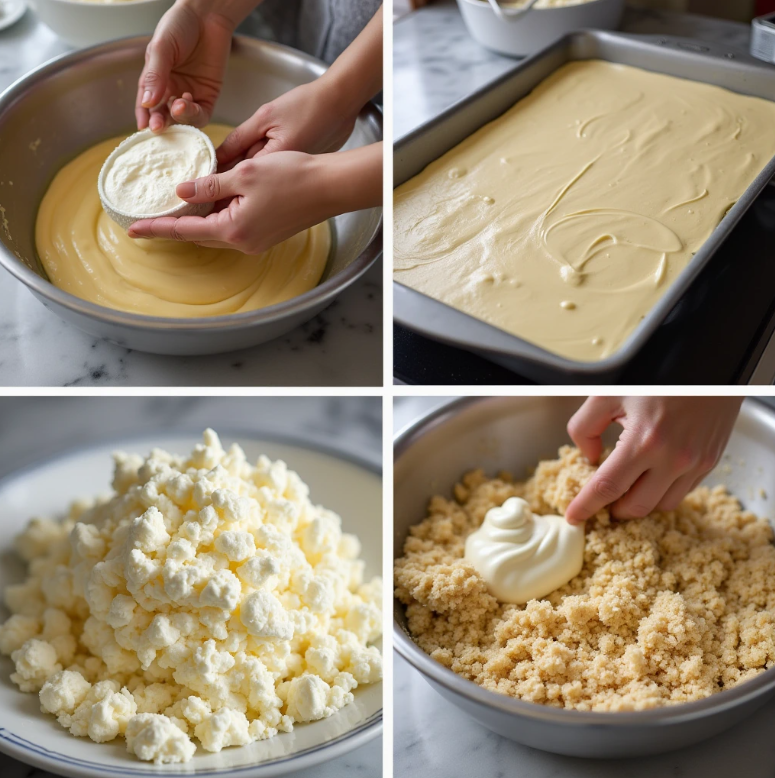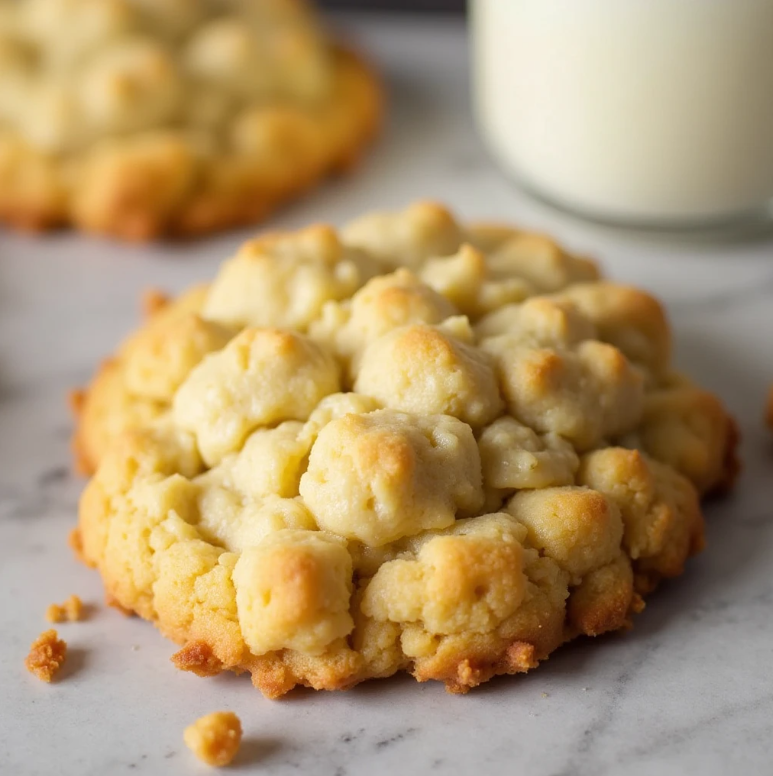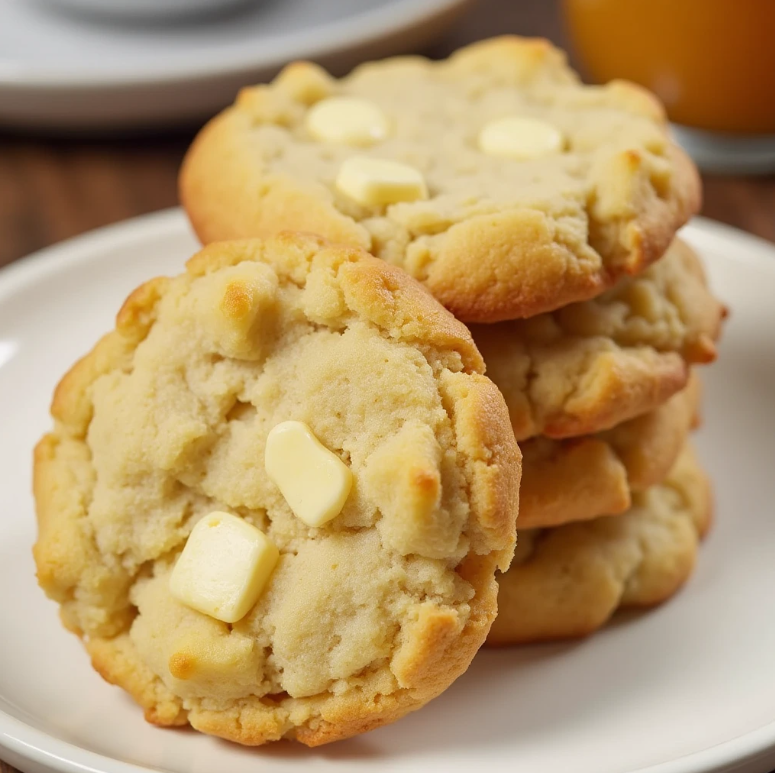Introduction
Cottage cheese cookies bring a unique touch to baking. Often not the first choice, cottage cheese makes these cookies wonderfully soft and flavorful. This article guides you through baking with cottage cheese, discussing its background, the advantages it offers in cookies, what ingredients you’ll need, and a simple recipe. Whether you’re new to baking or experienced, adding cottage cheese to your cookies can make them really special.
The History of Cottage Cheese Cookies
Cottage cheese has been used in cooking for a long time, but using it in cookies is newer. These cookies started in Eastern Europe, where people often used dairy like cottage cheese in sweets. They made these cookies to use up any leftover cheese. Over time, the recipe changed and spread around the world, becoming more popular. Now, cottage cheese cookies are loved for their special texture and slight tangy taste, making them a favorite in many different food traditions.
Benefits of Using Cottage Cheese
Incorporating cottage cheese into your baking has several advantages:
- High Protein Content: Cottage cheese is rich in protein, which makes your cookies more nutritious.
- Reduced Fat: Its creamy texture allows you to use less butter or oil, cutting down on fat.
- Versatility: Cottage cheese works well with many different flavors and ingredients, making it a flexible addition to recipes.
These benefits make cottage cheese a valuable ingredient in your baking toolkit.
Key Ingredients for Cottage Cheese Cookies

To bake the perfect cottage cheese cookie, several key ingredients are crucial. These include:
- Cottage Cheese: Opt for full-fat versions for richer flavor and texture.
- Flour: All-purpose flour works best for a soft, chewy texture.
- Baking Powder: Acts as a leavening agent to help the cookies rise.
- Sugar: Balances the tanginess of the cottage cheese and adds sweetness.
- Butter: Enhances flavor and contributes to the cookie’s crisp edges.
- Eggs: Bind the mixture together and improve the texture.
By carefully selecting these ingredients, you can ensure that your cottage cheese cookies are a delightful treat for any occasion.
Step-by-Step Recipe Guide
Baking cottage cheese cookies is both an art and a science. Here is a comprehensive guide to help you through the process:
- Preparation: Preheat your oven to 375°F (190°C) and line a baking sheet with parchment paper.
- Mix Dry Ingredients: In a bowl, combine flour, baking powder, and a pinch of salt.
- Cream Butter and Sugar: In another bowl, cream together butter and sugar until light and fluffy.
- Add Eggs and Cottage Cheese: Beat in eggs one at a time, then mix in the cottage cheese.
- Combine Mixtures: Gradually add the dry ingredients to the wet, stirring until just combined.
- Shape Cookies: Drop spoonfuls of the dough onto the prepared baking sheet.
- Bake: Bake for 10-12 minutes or until the edges are golden brown.
- Cool: Let the cookies cool on the baking sheet for a few minutes before transferring to a wire rack.

Creative Variations of Cottage Cheese Cookies
Exploring different flavors and ingredients can turn the basic cottage cheese cookie recipe into a delightful surprise for any palate. Here are some creative variations to consider:
- Fruit Additions: Mix in lemon zest or fold in diced apples for a fresh, fruity flavor.
- Chocolate Chips: Incorporate chocolate chips or cocoa powder for a chocolatey twist.
- Nuts and Seeds: Add chopped walnuts, almonds, or sunflower seeds for a crunchy texture.
- Spices: Spice up your cookies with cinnamon, nutmeg, or cardamom for a warm, inviting taste.
- Herbs: For a savory version, blend in finely chopped herbs like rosemary or thyme.
Each variation not only enhances the flavor but also adds a unique touch to the traditional cottage cheese cookie.
Common Mistakes to Avoid
When baking cottage cheese cookies, certain pitfalls can affect the outcome. Be mindful of these common mistakes:
- Overmixing the Dough: This can lead to tough cookies. Mix just until the ingredients are combined.
- Using Low-Fat Cottage Cheese: Full-fat cottage cheese provides moisture and flavor, crucial for a perfect texture.
- Insufficient Creaming: Properly cream butter and sugar to achieve light and fluffy cookies.
- Skipping Chilling: Chilling the dough can help in handling and shaping the cookies better.
- Overbaking: Remove cookies from the oven when they are just golden around the edges to ensure they remain soft.
Avoiding these errors will help maintain the quality and texture of your cookies, ensuring they come out perfect every time.
Pairing Cottage Cheese Cookies
Cottage cheese cookies pair wonderfully with a variety of beverages and dishes. Here are some ideal combinations:
- Tea: A light herbal or black tea complements the subtle flavors of the cookies.
- Coffee: A robust coffee balances the sweetness and tanginess of the cookies.
- Ice Cream: Serve alongside or crumbled over a scoop of vanilla or berry ice cream for a decadent dessert.
- Fruit Compotes: Pair with a side of apple or peach compote for a refreshing taste.
- Cheese Platters: Include in a cheese platter for a sweet contrast to savory cheeses.
These pairings enhance the dining experience, making cottage cheese cookies versatile for various occasions and tastes.
Health Considerations
While cottage cheese cookies are a tasty treat, it’s important to think about their nutritional effects, especially for those with dietary needs or health issues. Here are some points to consider:
- Protein Content: Cottage cheese is high in protein, which is great, but be mindful if you have specific dietary limits on protein intake.
- Dairy Sensitivity: Since cottage cheese is a dairy product, these cookies might not suit everyone, particularly those who are lactose intolerant or have dairy allergies.
- Calories: Despite the health benefits of cottage cheese, cookies may still contain sugar and fats, so keep an eye on your calorie consumption.
- Sodium Levels: Cottage cheese can be high in sodium, which could be a concern if you’re watching your salt intake.
- Gluten: If you use regular flour, these cookies aren’t gluten-free. To accommodate gluten sensitivities, you might want to use gluten-free flour.
Considering these factors can help you enjoy cottage cheese cookies in a way that fits with your health needs and dietary preferences.

Why Cottage Cheese Cookies Stand Out
Cottage cheese cookies are not just a treat but a standout choice for several reasons:
Unique Texture
The addition of cottage cheese gives these cookies a soft, creamy texture that is hard to find in other cookie types.
Versatility
Whether sweet or savory, these cookies can be adapted to suit any flavor profile.
Nutritional Value
Higher in protein than most cookies, they offer a more satisfying snack option.
Ease of Preparation
Despite their sophisticated outcome, these cookies are surprisingly easy to make.
This distinctive combination of features makes cottage cheese cookies a favorite among those who enjoy baking and indulging in innovative desserts.
FAQs:
Certainly! Here are the answers to the frequently asked questions about cottage cheese, crafted using transition words and active voice:
- What does cottage cheese do in baking?
In baking, cottage cheese serves multiple purposes. It adds moisture to the batter, helping to create a tender texture in finished baked goods like cakes and cookies. Cottage cheese also imparts a mild, creamy flavor that can enhance a variety of recipes. Additionally, it boosts the nutritional content of your treats by providing extra protein and calcium. This makes it a great choice for healthier baking options. - Is cottage cheese good for your gut?
Yes, cottage cheese is good for your gut. It has probiotics, which are good bacteria that help your gut stay healthy. Cottage cheese is also high in protein and low in sugar, making it a good choice for a balanced diet. - Can I make cottage cheese taste like sour cream?
Yes, you can make cottage cheese taste like sour cream by blendin it until smooth and adding a bit of lemon juice or vinegar to achieve the tangy flavor typical of sour cream. This substitution not only mimics the taste and texture but also reduces fat and increases protein content in your recipes. - Does cottage cheese melt in the oven?
Cottage cheese doesn’t melt in the oven like typical cheeses that get gooey. Instead, it softens and becomes creamier but keeps some of its chunky texture. This quality makes it great for baking because it adds moisture without becoming runny.
Conclusion
Cottage cheese cookies are special because they blend flavor, softness, and flexibility. They stand out among other baked goods. Whether you want to make your desserts healthier, try new tastes, or just enjoy a yummy, soft cookie, these treats are impressive. Follow the simple tips and ideas mentioned earlier to get good at baking with cottage cheese. You’ll love every bite. Enjoy making and tasting your own homemade cottage cheese cookies.

